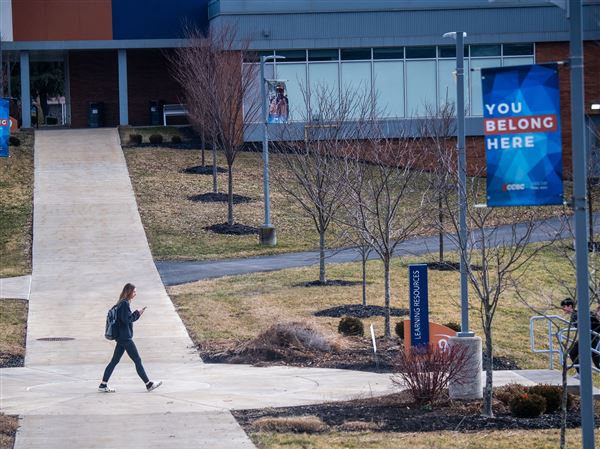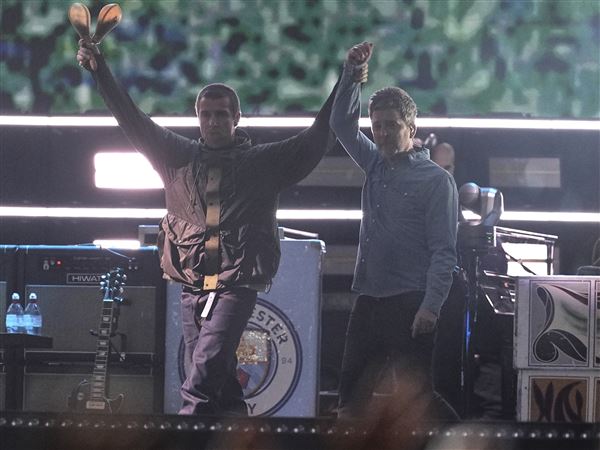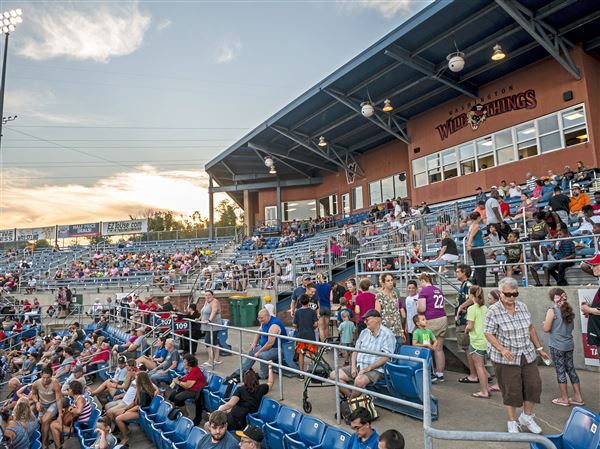"We're starting to reappreciate Madeira not only for its historical place in America, but also as a wine." -- Mannie Berk, The Rare Wine Co.
CHARLESTON, S.C. -- There are many different ways to experience the classic fortified white wine that is Madeira.
You can taste it where it is made, on the islands for which it is named, a Portuguese archipelago that lies 400 miles off the northwest coast of Africa. In Portuguese, Madeira means "wood," for the sub-tropical forests that once covered the steep, volcanic terrain before the 1400s when vineyards were planted and began to thrive there.
You can taste hints of that coffee-ground soil, cascading streams and lush fruits in the wine, claims food writer Matt Lee (he and his brother, Ted, have traveled to the islands), even if you taste it sitting in your living room armchair.
I got to taste Madeira with the Lee brothers and dozens of other food writers who were at the Association of Food Journalists' annual gathering last month in the Lees' native Charleston.
The setting was a cavernous room upstairs at the landmark restaurant that is McCrady's. About 50 of us walked in to long white-cloth-covered tables set with 350-some glasses of the amber liquid that glowed in the warm lights and exuded powerful aromas of butterscotch, honey, spices and ... history.
With reverence fit for a Charleston church, the presenters proceeded to tell us about what beverage distributor Henri Gabriel called "an endangered species in the world of alcohol."
McCrady's was built in the late 1700s by Edward McCrady, who, among other things, was a big importer of Madeira. George Washington likely drank Madeira here when he visited in 1791.
Back then, just about everybody who was anybody -- Benjamin Franklin, Thomas Jefferson -- drank this sweet stuff and a lot of it. (Washington was said to drink a pint each night at dinner.) It was America's drink -- what the Founding Fathers toasted with after signing the Declaration of Independence.
Barrels of it poured into ports such as Charleston, in exchange for indigo, cotton and corn. "It was really the hometown beverage, at least for the Charleston elite, until the Civil War," as it was for the upper class along the East and Gulf coasts, said Mannie Berk. He is a leading authority on Madeira and is founder and president of the Sonoma, Calif.-based The Rare Wine Co. (rarewine.com) that has been working to bring the beverage back.
As he tells it, Madeiran wines started out as regular white wines. A lot of it made it to South and North America because the islands were on the route European ships took. And because it was made in Africa, it was exempted from British King Charles II's heavy taxes on French wines and the rule that all European goods travel to the British colonies on British ships. Drinking Madeira became downright patriotic. Why, Francis Scott Key was said to have been sipping it while he wrote "The Star-Spangled Banner."
By the time of the American Revolution, Madeira was being fortified with brandy (now neutral grape spirits, raising its alcohol content to about 18 percent) to better survive the trans-Atlantic trip. It had been discovered that Madeira likes it rough -- that is, it was only improved by the long, rough sea passage in the hot holds of sailing ships.
That heating process came to be artificially replicated on the islands and makes Madeira unique among fortified wines, which include port and sherry. The heat oxidizes the wine, which means that oxygen no longer much affects it and it keeps virtually forever, even after being opened. That's one of the reasons sommeliers such as McGrady's Clint Sloan like it. And one of the reasons one can still enjoy Madeiras that are a century or older. As Mr. Sloan told us, "You're literally drinking history."
Mr. Berk, who has written books on the subject, tells the tale of Sir Winston Churchill's 1950 visit to Madeira, when Churchill was honored to be served a rare 1792 vintage that was bottled in 1840 and marveled: "Do you realize that when this wine was vintaged Marie Antoinette was alive?"
The last of the six glasses before each of us was a 1922 -- one that was bottled just this year after spending 89 years gaining color and character in the barrel. A bottle would sell for $400. I couldn't wait to take a taste.
And once I did, I had my eyes opened to Madeira's complex flavors and its balance of sweetness with acidity that Mr. Berk says makes it unique -- "the great fortified wine." (My PG colleague Gretchen McKay would disagree; she pronounced the smell and taste too "cloying" sweet -- "horrible.")
Madeira's popularity peaked just before the Civil War when it "had no peer," I was later told by Mr. Berk, who shared with me from his menu collection a 1951 one from the tony Monongahela House hotel that once stood on Pittsburgh's Smithfield Street at the Wharf. Guests (Abraham Lincoln was among them) could order from among 23 different Madeiras, which dwarfed any other wine category -- "typical for the time," said Mr. Berk -- at prices equal to and often surpassing the $2 the hotel charged for bottles of the most expensive Bordeaux and Champagnes.
With the post-Civil War dissipation of Southern wealth, some great collections of old Madeiras made their way to the North. J.P. Morgan scooped up a lot of it in the late 1800s. But Madeira was in decline, beset by disease outbreaks that wiped out the islands' grapes and a growing availability of and taste for French wines. Prohibition didn't help. "Eventually," Mr. Berk told the group, "Madeira died out."
Fast forward to the 1980s, when Mr. Berk and his Rare Wine Co. began to foster a resurgence in interest in fine Madeira among people who may only have known it as a salt-and-pepper laced cooking wine. In the late 1990s he had blended (by Ricardo Freitas of the islands' Vinhos Barbeito) very old wines with new ones to start a "Historic Series" of six nuanced but affordable Madeiras.
Five of them are named for previous centers of Madeira culture. Lined up before us from lightest and driest to richest and sweetest style, left to right, were: Charleston Sercial, Savannah Verdelho, New Orleans Special Reserve, Boston Bual and New York Malmsey. Rare Wine Co. also blended a one-time bottling of a "Benjamin Franklin" Special Reserve that was sold mostly to restaurants in Philadelphia.
Philly once was a Madeira hot spot and may be yet again. This spring, The Philadelphia Inquirer's Craig Laban called Madeira "one of the hottest new trends in Philadelphia drinking," with several restaurants embracing it, and one enthusiast even talking about reviving the tradition of the Madeira clubs that once were hopping there. (And who knows: Mr. Berk says his company may do another round of the stuff named for Ben, who once said he would "prefer to an ordinary death being immersed with a few friends in a cask of Madeira" to preserve them so they could be revived a century later.)
Madeira hasn't quite taken off like that in Pittsburgh (having a brand named for us might have helped), but you can order a Madeira after dinner at places including Toast! and Eleven.
McCrady's' Mr. Sloan, named one of Food & Wine magazine's Top Sommeliers this year, told us that Madeira isn't just for dessert anymore; he suggests the less-sweet types for before and during meals -- served at 65 to 72 degrees, or room temperature. The myriad flavors he pointed out to us included nuts, toffee and spices, even fun notes of fruity chewing gum in one.
McCrady's also mixes Madeira in cocktails that marry well with flavors such as coffee. "You're seeing a lot more of that."
The Ben Franklin is among more than 30 Madeiras available to consumers in Pennsylvania through the state Liquor Control Board, but it must be requested through a "special liquor order," and it's a luxury at $81.69 for a 750-milliliter bottle. The rest of the Historic Series city Madeiras (except for the sold-out New Orleans) you can order for $53.49 each.
The high prices have limited sales, but Madeira sales are up about 1 percent, says Mark Hazur, the PLCB's chief of product education. "It's a neat product," he says, interesting not just for its history, but also for its range of vintages, varietals and blends. "There are plenty of different things to look at and enjoy with that product."
The most dear in the state's catalog include a 1950 Reserva Velha Barbeito Bual Favilla Vieira for $290.99, a 1958 Reserva Velha Barbeito Malvasia for $257.19, and a 1968 Blandy's Verdelho for $182.39. But you can find a range of more affordable vintages ($20 to $40) at state specialty stores, all the way down to the $5.99 Paul Masson, which is made in California.
If you're like me, you'll want to try the real thing -- one aged for at least seven or eight years, according to Mr. Berk, who adds, "At 10 years, they become interesting." Paying a little more isn't such a big risk, because, even after you open the bottle, you don't have to worry about it going bad. The irony is, as Mr. Berk puts it, that even though Madeira almost disappeared, "It lives forever."
Madeira Sauce (Sauce Madere)
PG TESTED
A lot of Madeira made for cooking gets salt and pepper added to it, so you can't drink it. But you can use drinking Madeira to make the classic sauce. It still shows up on menus at restaurants such as the Portuguese-themed Marisqueira Mediterranean Bistro in Aspinwall, which offers Vitela a Madeirense (veal cutlets in a Madeira wine sauce) for $20.95 and Frango a Casa (breast of chicken with chorizo and mushrooms in a Madeira wine sauce) for $16.95. But it's easy to make this classic sauce at home, too, using recipes from a bible of French cooking first published in 1932. First you make a brown sauce that "is the basis of many classic sauces for meat, game and variety meats. It is based on a brown roux," according to the book, which notes that the Madeira Sauce "is good with most kinds of meat, especially veal and tongue."
-- Bob Batz Jr.
- 3 1/2 tablespoons butter
- 2 ounces onion, quartered
- 2 ounces bacon, diced
- 1/2 cup flour
- 1 1/4 cups water or any stock
- Salt and pepper
- 1 bouquet garni
- 2 tablespoons very good Madeira
Melt the butter in a large heavy pan. Add the onion and bacon and cook over moderate heat until browned. Remove the onion and bacon, set them aside, and increase the heat slightly. When the butter begins to smoke, add the flour to the pan, all at once. Stir with a wooden spoon until the butter and flour mixture browns. Stirring all the time, gradually add the water or stock, then season with salt and pepper. Return the onion and bacon to the pan with the bouquet garni and cook gently for 20 minutes. Remove them before serving.
Just before serving, add the Madeira.
Makes 11/4 cups.
-- "I Know How to Cook" by Ginette Mathiot (Phaidon, 2009)
First Published: November 16, 2011, 10:00 a.m.
















